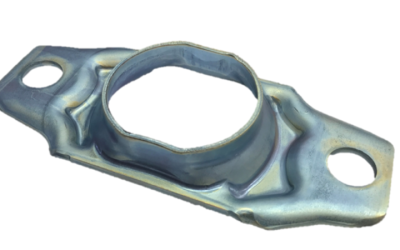A one-way check valve is also most simply known as a check valve. As the name implies, these valves have one important role in the system, and this is to prevent any media from flowing back through the valve.
As a fully automatic valve, the one-way check valve does not have an external handle or control. However, it is designed to meet the specific pressure requirements of the system, with the cracking pressure required a key factor in designing or choosing the right valve for the system.
While simple in design and function, the use of the check valve is essential in many types of applications. In some systems, it prevents backflow of mixed chemicals into pure chemical streams, preventing possible hazardous or explosive reactions. Even in water and pneumatic compressed air systems, they are essential to prevent backflow of water or air into components that could result in system contamination or failure.
The Swing Check Valve
A swing check valve is a common option in larger applications or when there is a heavy or viscous type of media. There is a disc that is attached to an arm that allows the disc to swing up and open to allow the flow of the media through the valve. When the pressure on the inlet side of the valve drops, the disc lowers, with the backflow pressure sealing it closed automatically. Once pressure builds up, the disc is swung open, and the flow resumes.
The Ball Check Valve
The ball check valve has a ball, often loaded on a spring that works like the disc. The ball moves backward and quickly creates a seal with a drop in pressure on the inlet side of the valve. Highly responsive and ideal for mini valve configurations, the ball one-way check valve is a popular option in many different applications.


